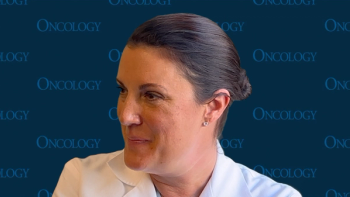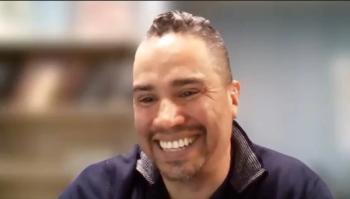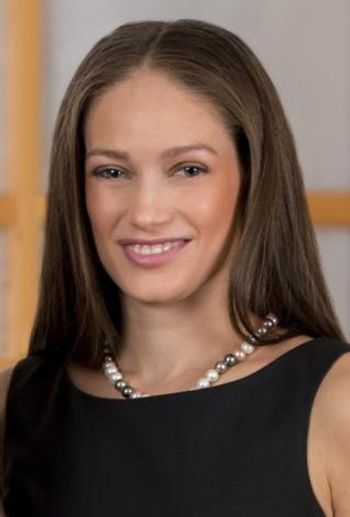
Video-Based Genetic Counseling Improves Comprehension in HBOC
In those being screened for hereditary breast and ovarian cancer syndrome, use of a video tool improved the duration of physician-led genetic counseling.
Video-based genetic counseling led to improved comprehension by the advice seeker and a reduction in physician counseling duration when patients underwent physician-led counseling for hereditary breast and ovarian cancer (HBOC), according to results from a study shared at the
Overall, there were no differences between the video-based group and the standard group regarding physician counseling ratings. The video group felt very well informed (1/5), and the standard group felt well informed (2/5; P = .07). Across both groups, counseling in general (P = .02) and comprehension (P = .69) were rated very good.
The duration was considered excellent by 89% (n = 48) of the video-based group and 87% (n = 47) in the standard group (P = 1); the score was considered excellent by 87% (n = 47) and 89% (n = 48), respectively; and 89% (n = 48) and 93% (n = 50) said they had enough time for the questions.
In the video-based group, the median comprehension of the video was rated excellent (1/5); the duration was rated excellent by 82% (n = 45) and too long by 16% (n = 9); the video tool plus physician counseling duration was rated excellent by 92% (n = 51) and too long by 4% (n = 2); the scope was rated excellent by 69% (n = 37) and as having too much information by 30% (n = 16); and the video tool plus physician counseling scope was rated excellent by 87% (n = 46) and as having too much information by 11% (n = 6).
The video tool-based counseling significantly increased comprehension scores from 62.5% (10/16 points; 95% CI, 9-11) in the standard group to 81.3% (13/16 points; 95% CI, 13-14; P <.001). The tool also significantly reduced the counseling duration by the physician from 6.6 minutes (95% CI, 4.5-8.4) to 2.4 minutes (95% CI, 1.8-4.4; P <.001).
Factors of note that impacted the comprehension score included use of the video tool (2.504; 95% CI, 1.689-3.319; P <.001), level of education (–1.343; 95% CI, –2.206 to –0.481; P = .002), and the use of the patient’s mother tongue (1.617; 95% CI, 0.652-2.581; P = .001). Of note, use of the video tool impacted the duration of physician counseling (–2.236; 95% CI, –2.994 to –1.478; P <.001).
“Video-based genetic counseling followed by physician counseling is feasible,” wrote lead study author Georg Pfeiler, MD, an associate professor in the Department of Obstetrics and Gynecology at the Medical University of Vienna, and coauthors, in the presentation.1 “Incorporation of the video tool in genetic counseling leads to significant improvement of comprehension by the advice seeker and significant reduction in physician counseling duration.”
This study included 110 advice seekers for HBOC who were pre-screened with an indication for testing and were patients with cancer, former patients with cancer, and those with family history of cancer. Sociodemographic characteristics such as education level, language skills, and income were also collected; those with language skills A1 and A2 were excluded from participating.
The trial occurred at a single academic center, and patients were randomly assigned, in a 1:1 ratio, to receive video-based consultation or standard consultation. Six gynecological oncologists were trained for genetic counseling. The video tool was played via an iPad and over-ear headphones while patients were in the waiting area of the outpatient clinic.
The video played for advice seekers was a 16-minute cartoon in the German language that was created in accordance with the Austrian clinical practice guideline for genetic counseling and testing.2 At the end of the video, advice seekers were presented with 6 dichotomic comprehension questions.
After genetic testing, advice seekers filled out a comprehension questionnaire with a maximum of 16 achievable points, as well as a questionnaire focusing on the quality, satisfaction, comprehensiveness, and score of the genetic counseling process.
The study’s primary end point was to evaluate the physician counseling duration and advice seeker comprehension. Secondary end points included perception of the quality and quantity of counseling by the advice seeker, comprehension, score, and duration.
A total of 55 advice seekers (50%) were in the video-based genetic counseling arm, and 55 advice seekers (50%) were in the standard arm. The median patient age was 47 years (range, 35-61), the testing indication was predictive in 70.91% of all patients, 38.53% reported college as their level of education, and 62.04% reported having no previous genetic knowledge.
Study limitations were cited as only being in a single center, having relatively small numbers, only using videos in one language, and questions of whether the video tool increased the uptake of genetic counseling and testing, and of the uptake of the use of an intensified screening program or prophylactic surgeries not being answered yet.
Editor’s Note: Pheiler reported consulting or advisory roles for Amgen, AstraZeneca/Daiichi Sankyo, AstraZeneca/Merck, Gilead Sciences, Lilly, Menarini, Novartis, Pfizer, Roche/Genentech, Seagen, and UCB; receiving research funding from Accord Healthcare, AstraZeneca (Inst), Pfizer, and Roche/Genentech; receiving travel expenses from Accord Research, AstraZeneca/Daiichi Sankyo, Gilead Sciences, Lilly, Merck, Novartis, Pfizer, Roche/Genentech, and Seagen; and being on the speakers’ bureau for Accord Healthcare, Amgen, AstraZeneca/Daiichi Sankyo, AstraZeneca/Merck, Gilead Sciences, Lilly, Novartis, Pfizer, Roche/Genentech, Seagen, and UCB.
References
- Pfeiler G, Tea MKM, Seifert M, et al. Video-based genetic counseling to reduce physician workload and enhance consulter understanding: A prospective randomized clinical trial. J Clin Oncol. 2025;43(suppl 16):1502. doi:10.1200/JCO.2025.43.16_suppl.1502
- Marth C, Hubalek M, Petru E, et al. AGO Austria recommendations for genetic testing of patients with ovarian cancer. Wien Klin Wochenschr. 2015;127(15-16):652-654. doi:10.1007/s00508-015-0814-7
Newsletter
Stay up to date on recent advances in the multidisciplinary approach to cancer.

















































































